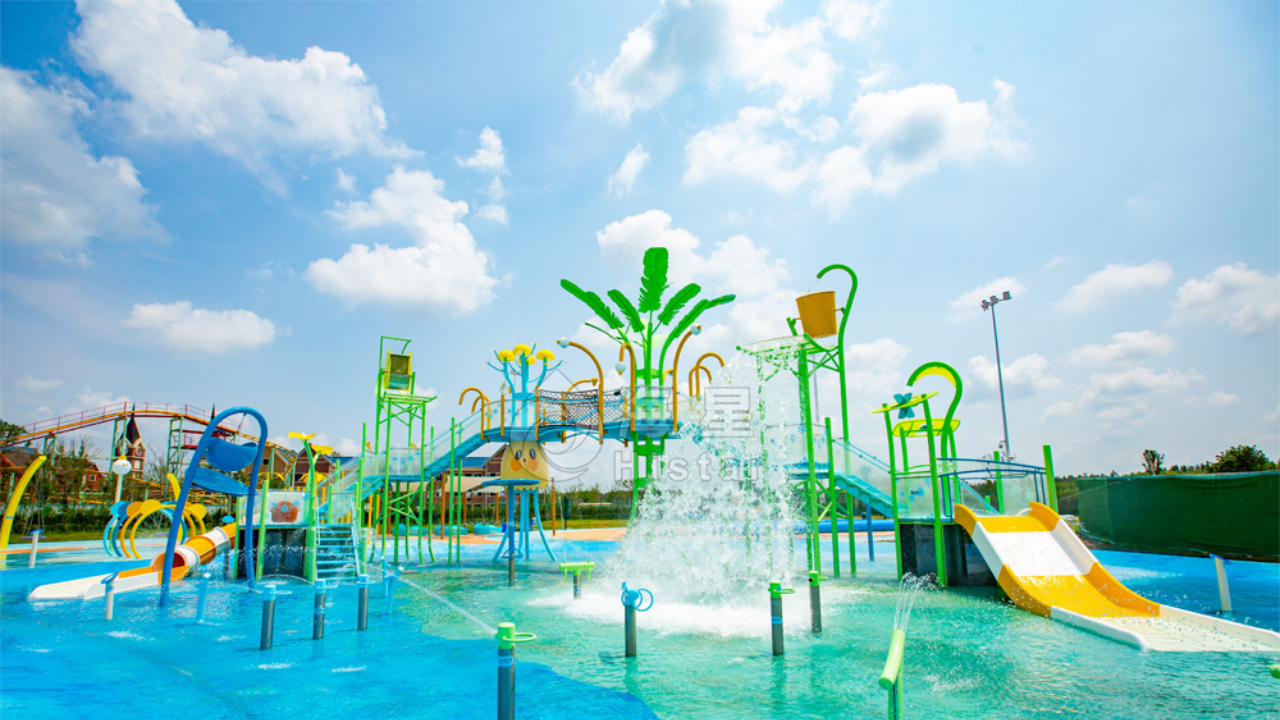Today, splash pads have transformed from simple playgrounds into dynamic, active, engaging and educational spaces for safe play. The interactive water features of splash pads are a great place for children to learn, play and grow. In today’s world, the place for child-focused activities has become supply splash pad as they can provide environmental exposures that may be beneficial to physical, social and cognitive development. They are educational tools that allow children to connect with nature, explore scientific concepts and develop social skills in a lively water-based setting.
The Considerations of Playing in Water Systems to Learn
The power of learning through play is enhanced when this is applied to water-based environments. Children love splash pads because they serve as an engaging way to learn through interacting with different aspects of water play. These interactive experiences provide sensory experiences, physical coordination, and even very early social skills. Splash pads encourage physical movement, balance and fine motor skills, which are particularly important in early childhood development, by playing with children that challenge and excite. These features also appeal to older children, who may be more curious and have greater problem-solving abilities as they explore interactive water elements.
The health advantages of playing with water in the form of a rain shower, a sprinkler, or whatever else parents can find at home or in a park are beneficial for toddlers learning about their first sensory experiences and older children enhancing their coordination and teamwork skills. Splash pads allow children to play and use their imagination in a safe environment while helping improve their physical and social skills. Splash pads are more complex than simple play areas as they are developmental spaces that help enhance a child’s overall development.
Design Elements That Support Learning: Educational Splash Pad Features:
Design elements for splash pad equipment can be tailored to promote learning while encouraging curiosity. Features of the educational splash pad include interactive fountains, sensory zones, and water channels for immersive learning experiences. They are particularly effective in supporting education through the use of themed designs ranging from shapes and colors to animal designs that introduce children to natural elements, patterns, and basic scientific principles. This is a stimulating environment where the child learns by observing and interacting.
For instance, a splash pad with animal-themed water sprayers can create an interest in nature and wildlife in children. Children are captured by interactive features like fountains that look like animals or flowers while they learn to understand their surroundings. Splash pads transform familiar elements like leaves and ducklings into water features that give children a magical space to play and explore patterns and cause-and-effect relationships while having fun.
Water and Science: Splash Pads as Interactive STEM Learning Spaces
Splash pads are a practical way to introduce children to some basic Science, Technology, Engineering, and Math (STEM) concepts in an intuitive way. When playing with water, children can explore ideas of gravity, pressure, and fluid dynamics. Tilting water buckets and spray nozzles teach cause and effect while arching fountains and water channels help children understand fluid flow and gravity.
Even splash pads feature rotating water elements or water walls as interactive science exhibits. This learning potential can be enhanced with seasonal or temporary installations where designers consider designs that teach certain scientific principles. Splash pads provide these features so that children can explore scientific concepts while they play, developing a natural curiosity about how things work.
Splash Pads and Social Skill Development
Splash pad group play supports social skill development as students learn to cooperate, share, and take turns. Splash pads encourage communication and problem solving and are important skills that kids need to navigate school and life. Engaging in teamwork, children work together to control water sprays or patterns in water channels, which leads to the strengthening of their ability to collaborate and negotiate with peers.
Splash pad layouts with open zones and shared water features encourage social interaction by inviting children to play together. Splash pads can help children build friendships and create meaningful connections in a fun yet interactive setting, all while developing social skills that are vital to lifelong success.
Safety and Accessibility: All Abilities Design
Splash pads feature a design with high-end safety and accessibility. Children of all abilities can use them. Unlike other pools or playgrounds, splash pads do not offer standing water, greatly reducing the risk of drowning. Splash pad designs often include an anti-slip surface so that children can move around safely.
It includes elements of design that are inclusive and enable children of all abilities to participate. For example, splash pads featuring sensory features, including gentle misting arches and water fountains, provide children with sensory sensitivities with a welcoming environment. Splash pad designs also accommodate a variety of mobility levels, allowing all children to enjoy interactive play. These features promote a safe and inclusive space for children who are physically different to participate in the same play activities.
Conclusion: Splash Pads and the Future of Learning
Newer splash pads are redefining Play by blending education and entertainment into one constant fun and learning experience. These thoughtfully designed spaces contribute to physical, cognitive and social development and are invaluable to communities, schools and recreational areas. Splash pads are particularly appealing given that they not only serve as practical, safe and effective solutions for child development, but as communities consider what is best for children, splash pads are gaining favor. Splash pads serve as a glimpse into the future of interactive learning spaces, with designs that are focused on stimulating curiosity, teamwork, and physical activity.
Learning-focused splash pads of all types allow children the opportunity to play and learn in the neighborhood park or schoolyard. The potential for these water play areas to foster bright outdoor play futures as they meld the play fun with the educational goodness, all within the welcoming and secure environment of a splash pad, is apparent.

